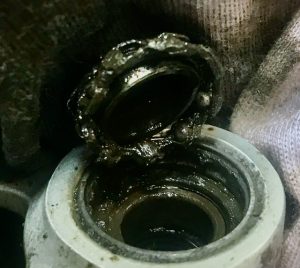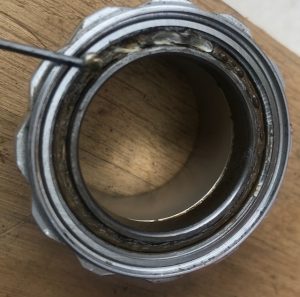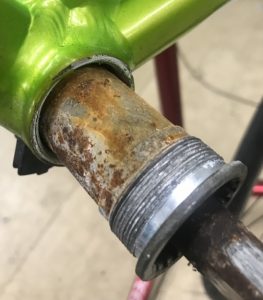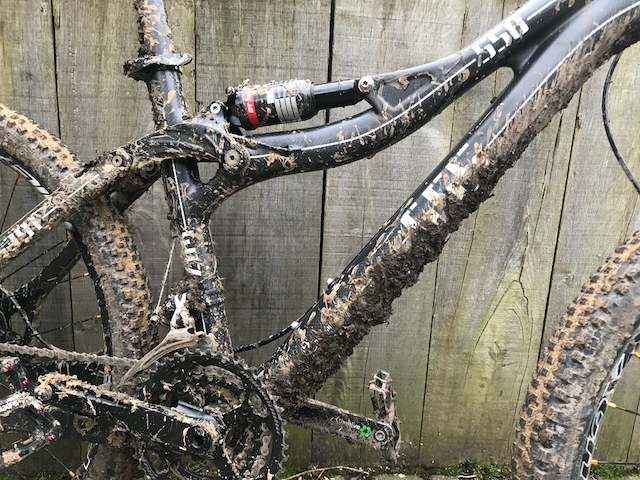I’m going to talk about the very basics of looking after a bike.
We’re not talking anything fancy here. No special knowledge or tools are needed. It’s not something that needs to be taught and practiced…
I’ll get straight to the point just to show you how basic we are talking.
- Keep your bike clean. Not ‘from the shop’ clean, but wash most of the mud off it after use, and dry it before you put it away.
- When not in use protect it from the weather. If you can, store your bike in a garage or shed. If you have to keep it outside in a garden put a tarpaulin over it to protect it.
Those two points will greatly increase the life of your bike, the parts on your bike, and reduce the need for repairs. Simple.

a bearing that is way beyond replacement. The ball bearings are worn down and have flat edges.
Why just these two points? Well to answer that we have to go into a little more detail.
Firstly, moving parts do not like dust and dirt. A chain for example should be clean and ‘lightly’ oiled on the rings only – the bits that engage with the cogs. Oil will collect dust and dirt – fact. The more oil on the chain, the more dust and dirt it will soak up. The oil mixes with the dust and dirt to become a grinding paste. So if left alone for too long your chain and cogs (rear cassette and front chainrings) wear themselves away with every peddle stroke.
Wipe down the chain with a cloth to remove excess oil and dirt, a little degreaser sprayed on the cloth can help (Never spray degreaser or oil directly towards the chain incase it gets on the braking surfaces). Then apply a little fresh oil to the middle of the chain and your chain will reward you with a longer life. Similarly headset and bottom bracket bearings should be kept clean to reduce the chance of dirt getting in and accelerating the wear. When we service a bike, we routinely remove, clean, grease, and reinstall the bottom bracket and headset bearings to save you the cost of replacement in the long run.

Emulsified grease and water in the bearings seen here
Then there’s the mud. Mud holds water and takes a long time to dry out, and so when in contact with metal the moisture in the mud supports the formation of corrosion, rust typically, which isn’t good whichever way you look at it. Similarly water penetration is bad! If it gets into your headset or bottom bracket it will emulsify the grease, which means the grease will stop protecting the bearings, and then they will corrode, and wear at a higher rate. Sticking with water ingress, if it gets in the frame, it will head south to the bottom bracket and pool around it. Until some unsuspecting mechanic breaks free the bottom bracket from the frame (usually with a lot of force due to the corrosion) and releases stagnant water that has been sitting in the frame for way too long!

A little force, water out, dried off, and this is what we are left with
Oh and there’s tyres which if left out in the sun for extended periods (read months) will crack as the rubber ‘dries out’ and becomes brittle. Cracked tyres are dangerous and need to be replaced.
So please, even if it’s just so that the team at The Canterbury Bike Project and I don’t get covered in stagnant water so much, keep your bike clean and protect it from the weather. If you really want to look after your bike, treat it to a service every 6 to 9 months.
If you’ve found this article useful please share y clicking the share icon to the right. Thank you!


